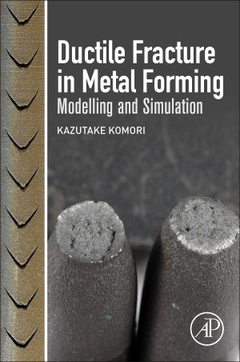Ductile Fracture in Metal Forming Modeling and Simulation
Auteur : Komori Kazutake

Ductile Fracture in Metal Forming: Modeling and Simulation examines the current understanding of the mechanics and physics of ductile fracture in metal forming processes while also providing an approach to micromechanical ductile fracture prediction that can be applied to all metal forming processes. Starting with an overview of different ductile fracture scenarios, the book then goes on to explain modeling techniques that predict a range of mechanical phenomena that can lead to ductile fracture. The challenges in creating micromechanical models are addressed alongside methods of applying these models to several common metal forming processes.
This book is suitable for researchers working in mechanics of materials, metal forming, mechanical metallurgy, and plasticity. Engineers in R&D industries involved in metal forming such as manufacturing, aerospace, and automation will also find the book very useful.
1. Macroscopic ductile fracture phenomena2. Macroscopic ductile fracture criteria3. Microscopic ductile fracture phenomena4. Microscopic ductile fracture criteria5. Micromechanical modeling using an ellipsoidal void model (author’s model)6. Simulation results using an ellipsoidal void model aAuthor’s model)
- Explains innovative micromechanical modeling techniques for a variety of material behaviors
- Examines how these models can be applied to metal forming processes in practice, including blanking, arrowed cracks in drawing, and surface cracks in upset forging
- Provides a thorough examination of both macroscopic and microscopic ductile fracture theory
Date de parution : 10-2019
Ouvrage de 294 p.
15x22.8 cm



